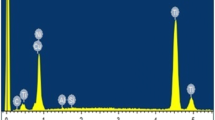Abstract
The present work deals with developing a fuzzy back-propagation neural network scheme for the prediction of drill wear. Drill wear is an important issue in manufacturing industries, which not only affects the surface roughness of the hole but also influences drill life. Therefore, replacement of a drill at an appropriate time is of significant importance. Flank wear in a drill depends upon the input parameters like speed, feedrate, drill diameter, thrust force, torque and chip thickness. Therefore, it sometimes becomes difficult to have a quantitative measurement of all the parameters and a qualitative description becomes easier. For these kinds of situations, a fuzzy back-propagation neural network model was trained and was shown to predict drill wear with reasonable accuracy. In the present case, a left and right (LR)-type fuzzy neuron was used. The proposed model is composed of various modules like fuzzy data collection at input fuzzy neuron, defuzzification of input data to get output, calculation of mean square error (MSE), and feedback to update the network. Results show a very good prediction of drill wear from the fuzzy back-propagation neural network model.
Similar content being viewed by others
References
Lin SC, Ting CJ (1995) Tool wear monitoring in drilling using force signals. J Wear 180:53–60
Lin SC, Ting CJ (1996) Drill wear monitoring using neural network. Int J Mach Tools Manuf 36:465–475
Lee BY, Liu HS, Tarng YS (1998) Modeling and optimization of drilling process. J Mater Process Technol 74:149–157
Xiaoli Li, Tso SK (1999) Drill wear monitoring based on current signals. J Wear 231:172–178
Tsao CC (2002) Prediction of flank wear of different coated drills for JIS SUS 304 stainless steel using neural network. J Mater Process Technol 123:354–360
Ertunc HM, Loparo KA (2001) A decision fusion algorithm for tool wear condition monitoring in drilling. Int J Mach Tools Manuf 41:1347–1362
Abbu-Mahfouz I (2003) Drilling wear detection and classification using vibration signals and artificial neural network. Int J Mach Tools Manuf 43:707–720
Kim D, Ramulu M (2004) Drilling process optimization for graphite/bismaleimide-titanium alloy stack. J Compos Struct 63:101–114
Singh AK, Panda SS, Pal SK, Chakraborty D (2006) Predicting drill wear using an artificial neural network. Int J Adv Manuf Tech 28:456–462
Li X, Dong S, Venuvinod PK (2000) Hybrid learning for tool wear monitoring. Int J Adv Manuf Tech 16:303–307
Kuo RJ, Cohen PH (1999) Multi-sensor integration for online tool wear estimation through radial basis function networks and fuzzy neural network. Neural Netw 12:355–370
Lo S-P (2002) The application of an ANFIS and Grey system method in turning tool-failure detection. Int J Adv Manuf Tech 19:564–572
Hashmi K, Graham ID, Mills B (2000) Fuzzy logic based data selection for drilling process. J Mater Process Technol 108:55–61
Ghasempoor A, Jeswiet J, Moore TN (1999) Real-time implementation of on-line tool condition monitoring in turning. Int J Mach Tools Manuf 39:1883–1902
Ezugwu EO, Fadare DA, Bonney J, Da Silva RB, Sales WF (2005) Modelling the correlation between cutting and process parameters in high-speed machining of Inconel 718 alloy using an artificial neural network. Int J Mach Tools Manuf 45:1375–1385
Kuo RJ (2000) Multi-sensor integration for on-line tool wear estimation through artificial neural networks and fuzzy neural network. Eng Appl Artif Intell 13:249–261
Freeman JA, Skapura DM (2004) Neural networks algorithm, application, and programming techniques. Pearson Education, Upper Saddle River, NJ, USA
Haykin S (2004) Neural networks a comprehensive foundation, 2nd edn. Prentice Hall, NJ, USA
Author information
Authors and Affiliations
Corresponding author
Rights and permissions
About this article
Cite this article
Panda, S.S., Chakraborty, D. & Pal, S.K. Monitoring of drill flank wear using fuzzy back-propagation neural network. Int J Adv Manuf Technol 34, 227–235 (2007). https://doi.org/10.1007/s00170-006-0589-0
Received:
Accepted:
Published:
Issue Date:
DOI: https://doi.org/10.1007/s00170-006-0589-0




